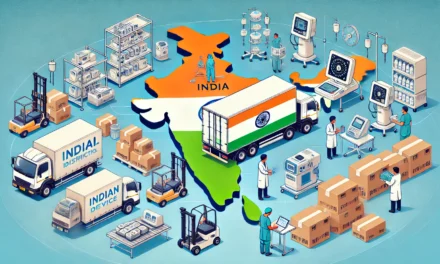
How do medical device manufacturers manage the supply chain for raw materials and components?

Medical device manufacturers must manage complex supply chains for raw materials and components to ensure high-quality products, compliance with regulatory standards, and cost-effectiveness. Here’s how they approach this challenge:
1. Strategic Sourcing:
- Domestic vs. International Suppliers:
- Manufacturers source materials domestically where available, such as stainless steel for surgical instruments, rubber for gloves, and polymers for disposables.
- High-tech components like sensors, microelectronics, and precision parts are often imported from countries like China, the US, and Germany.
- Criteria for Supplier Selection:
- Compliance with global quality standards (ISO 13485, FDA, CE).
- Reliability and scalability to meet production demands.
- Cost-effectiveness and lead time management.
2. Vendor Management:
- Building Long-Term Relationships:
- Partnering with trusted suppliers to ensure consistent quality and supply.
- Supplier Audits:
- Conducting regular audits to verify compliance with quality standards and regulatory requirements.
- Multiple Sourcing:
- Maintaining a diversified supplier base to mitigate risks of disruptions or price volatility.
3. Quality Assurance:
- Raw Material Testing:
- Rigorous quality checks on incoming materials to ensure compliance with specifications.
- Testing for biocompatibility, strength, and other critical properties, especially for implants and disposables.
- Traceability:
- Implementing systems to track raw materials from suppliers to finished products, ensuring accountability and regulatory compliance.
4. Regulatory Compliance:
- Standards and Certifications:
- Ensuring all materials meet global and local regulatory requirements, such as ISO, CE marking, and FDA standards.
- Documentation:
- Maintaining detailed documentation of raw materials and component sources for audits and certification processes.
5. Logistics and Inventory Management:
- Just-in-Time (JIT) Inventory:
- Reducing inventory costs by coordinating production schedules with supplier deliveries.
- Warehousing:
- Strategic storage facilities to maintain critical supplies, particularly for components with long lead times.
- Cold Chain Logistics:
- For sensitive components like biological materials, maintaining temperature-controlled supply chains is essential.
6. Supply Chain Risk Management:
- Identifying Critical Components:
- Recognizing parts or materials that are single-sourced or have limited availability and prioritizing alternate sourcing strategies.
- Risk Mitigation Strategies:
- Stockpiling critical materials.
- Developing secondary suppliers or local alternatives.
- Geopolitical Awareness:
- Monitoring global trade policies, tariffs, and disruptions (e.g., COVID-19, semiconductor shortages) to anticipate and mitigate risks.
7. Technology Integration:
- ERP Systems:
- Using enterprise resource planning (ERP) software to integrate procurement, inventory, and production data.
- IoT and AI:
- Leveraging IoT for real-time tracking of shipments and AI for demand forecasting and supply chain optimization.
8. Cost Management:
- Bulk Purchasing:
- Negotiating volume discounts with suppliers for frequently used materials like polymers, metals, and consumables.
- Value Engineering:
- Collaborating with suppliers to identify cost-saving opportunities without compromising quality.
- Local Sourcing:
- Promoting domestic manufacturing under initiatives like “Make in India” to reduce reliance on imports and associated costs.
9. Collaboration and Partnerships:
- Supplier-Producer Partnerships:
- Joint development programs for customized components or materials, especially for innovative devices.
- Clusters and Parks:
- Operating in medical device parks (e.g., Andhra Pradesh MedTech Zone) to access shared supply chain resources like testing facilities and material suppliers.
10. Sustainability:
- Eco-Friendly Materials:
- Sourcing biodegradable or recyclable materials to meet global sustainability goals.
- Waste Reduction:
- Partnering with suppliers to reduce packaging waste and optimize material usage.
Challenges in Supply Chain Management:
- Dependence on Imports:
- Many advanced components like semiconductors and precision parts are sourced internationally, increasing lead times and costs.
- Regulatory Barriers:
- Meeting diverse regulatory requirements for different markets can complicate procurement.
- Supply Disruptions:
- Events like pandemics or geopolitical conflicts can disrupt the availability of critical materials.
Effective supply chain management is crucial for medical device manufacturers to ensure quality, regulatory compliance, and timely delivery. By employing strategies such as vendor diversification, leveraging technology, and building strong supplier relationships, manufacturers can navigate challenges and create resilient supply chains. Government support for domestic manufacturing and infrastructure development further strengthens the industry’s capacity to manage raw material and component requirements effectively.




























